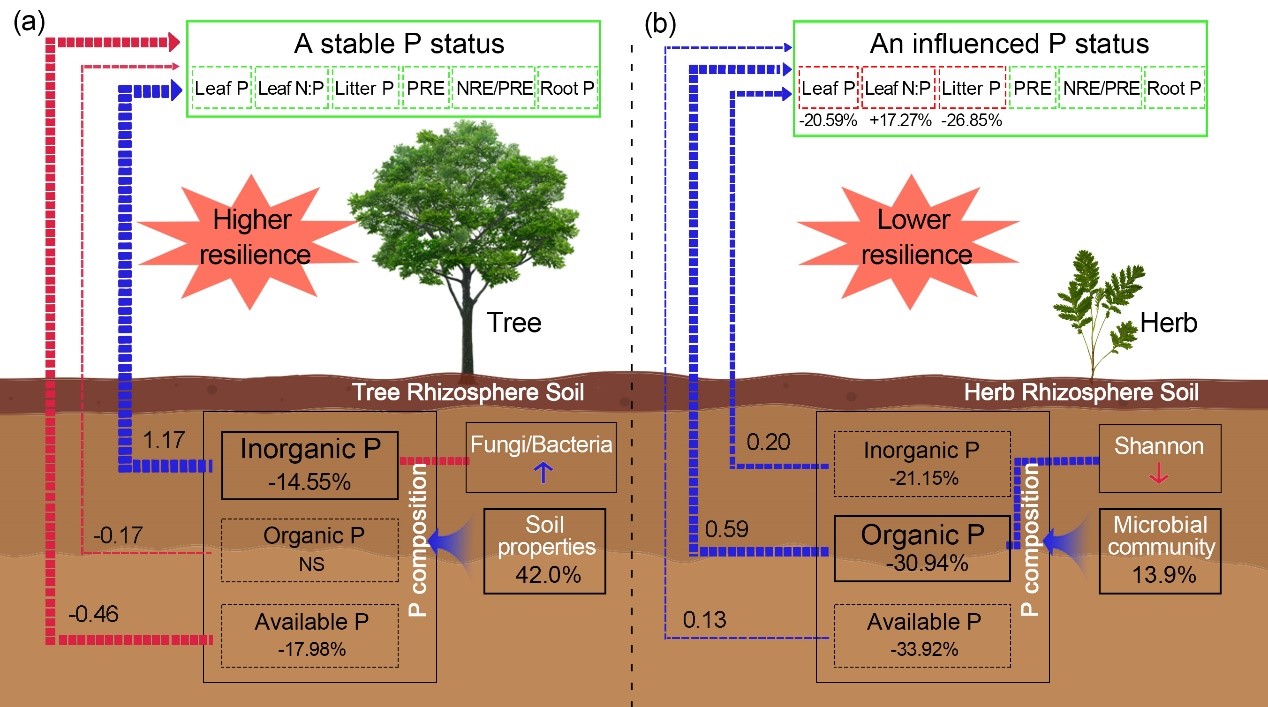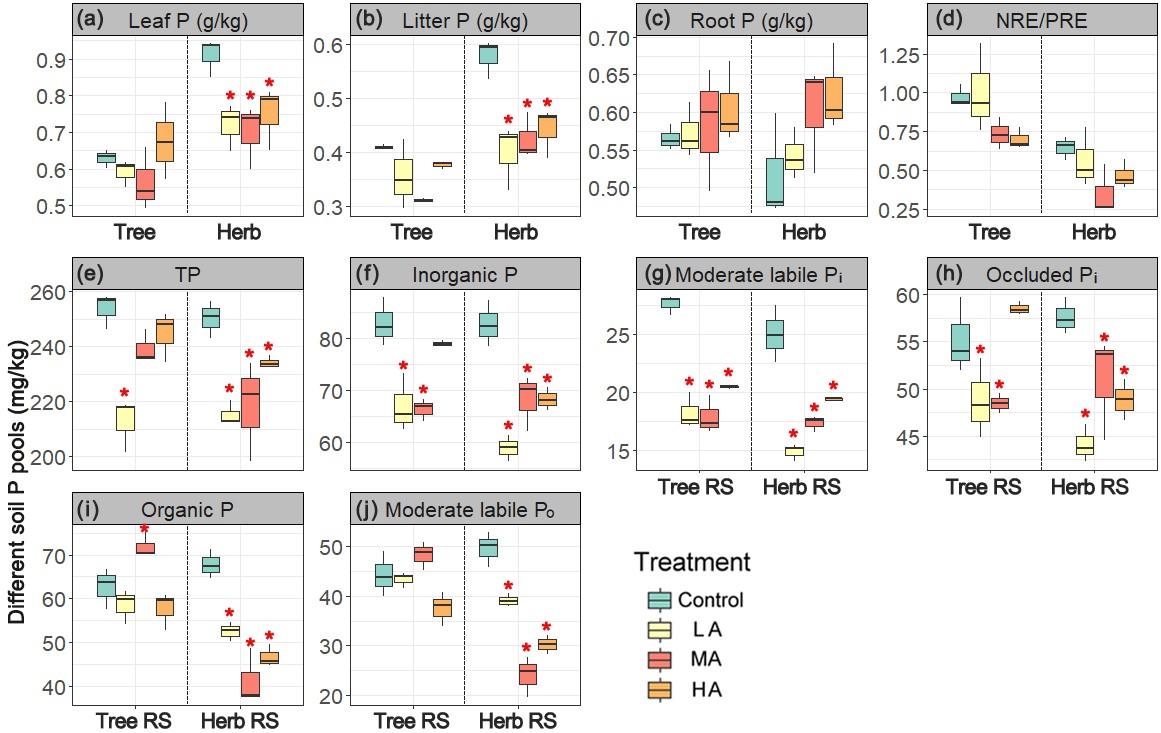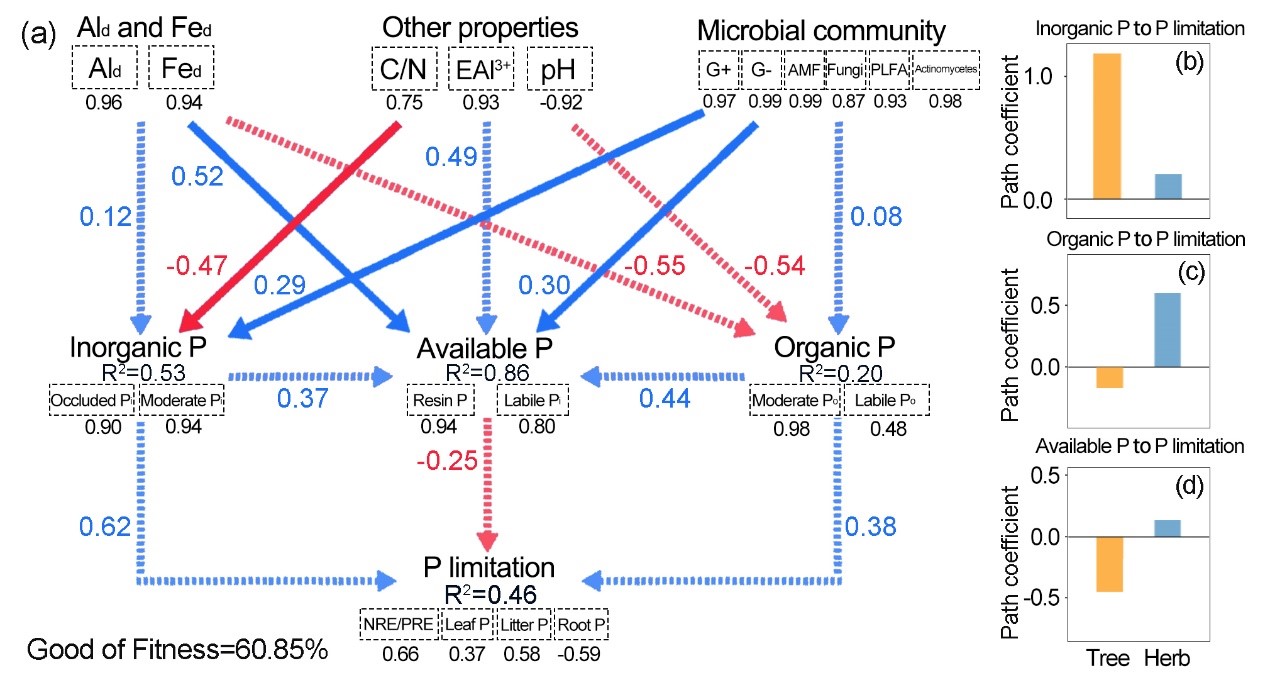From Rhizosphere to Resorption: Comparing Phosphorus Adaptation in Trees and Herbs Under Decadal Acid Rain Stress
As global soil acidification intensifies, tropical and subtropical forests face growing phosphorus (P) limitations, raising questions about which functional group—trees or herbs—would be disproportionately affected. To address this, researchers from the South China Botanical Garden, Chinese Academy of Sciences, conducted a long-term acid rain simulation (pH 4.0, 3.5, 3.0) to compare P dynamics and rhizosphere soil processes between tree and herb layers in a subtropical forest (Fig. 1).
The study found that prolonged simulated acid rain reduced inorganic phosphorus in tree rhizosphere soil, yet tree leaf, fresh litter, and root phosphorus levels, along with nitrogen-to-phosphorus resorption efficiency ratios, remained stable. In contrast, herb rhizosphere soil experienced declines in both inorganic and organic phosphorus, accompanied by significant reductions in leaf and fresh litter phosphorus content (Fig. 2). Further analysis revealed that tree rhizosphere phosphorus fractions were predominantly regulated by soil physicochemical properties (e.g., iron and aluminum oxides), whereas herb phosphorus dynamics were more reliant on organic P mineralization driven by microbial community (Fig. 3).
Published in Ecology under the title “Trees show higher resilience than herbs under phosphorus deficit induced by 12-year simulated acid rain” (https://doi.org/10.1002/ecy.70071), the work was also featured as a photo gallery in The Bulletin of the Ecological Society of America. Led by co-first authors Dr. YU Guangcan (postdoctoral fellow) and Dr. ZHENG Mianhai (professor), with corresponding author Dr. YAN Junhua (professor), the research received funding from Key Program of National Natural Science Foundation of China, Guangdong Basic and Applied Basic Research Foundation, Youth Innovation Promotion Association of the Chinese Academy of Sciences, and the China Postdoctoral Science Foundation. Paper Links: http://doi.org/10.1002/bes2.70015

Fig.1. Schematic of the influence of 12-y acid addition on the P dynamics of trees (a) and herbs (b).
(Imaged by YU et al)

Fig.2. Variations in P level in plant organs and rhizosphere soil after 12-y acid additions.(Imaged by YU et al)

Fig.3. Partial least squares path modeling results for the effects of Fed and Ald, microbial community, and other properties on soil P transformation (a); (b, c, d) Path coefficient of tree and herb group in the PLS-PM results.(Imaged by YU et al)
File Download: